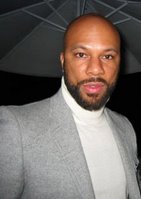
From The New York Daily News…
----------------------------------------
How easily he forgets racism
By Juan Gonzalez
Wesley Chan, a freshman at New York University, did his part to further the new college fad of defending America from yet another “invasion.”
With fellow members of NYU’s Republican club, Chan, who hails from New Jersey, joined yesterday in a bizarre exercise called Find the Illegal Immigrant.
“My parents came to this country from China the legal way: They waited their turn in line,” Chan said, offering a patriot’s pose to the throng of reporters and cameramen camped near Washington Square Park.
Chan stood out as one of the few nonwhites among a few dozen young Republicans who had turned out for what was more of a public relations stunt than a game.
Across the street, a far larger crowd of several hundred angry NYU students found nothing to laugh at.
“It’s degrading and racist,” said Dalia Yedidia, a freshman from San Francisco. “These people are trivializing a serious problem. They’re showing pictures of Mexicans and their children running across the border, so it’s clear who they’re trying to target.”
Chan roundly rejected such charges.
“We have a serious immigration problem we’re trying to highlight,” he said. “A lot of crimes are being committed by illegal immigrants.”
“What about the Chinese Exclusion Act?” he was asked. “That was the law here once.”
The glib words stopped. The smart, young Republican started groping for answers.
His sudden discomfort showed once again how little most of us know about this nation’s history of immigration battles.
Who legally gets to enter this country? Under what conditions can they become citizens? These questions have provoked repeated political battles among each new generation of Americans.
And no story is more buried, none more shameful, none more important to understand than how our nation treated the Chinese — a group so often referred to these days as a model minority.
As early as 1850, when there were only 600 Chinese in California, that state began to adopt discriminatory laws aimed at taxing the newcomers more than other foreigners in order to drive them from the gold fields.
As the Chinese population grew, white labor leaders and politicians began to target them as a new immigrant menace.
On Sept. 29, 1854, in the powerful New York Tribune, Horace Greeley, the paper’s legendary publisher and staunch abolitionist, called the new Chinese “uncivilized, unclean and filthy beyond all conception.” The men, Greeley wrote, “were lustful and sensual,” while every Chinese female was a “prostitute of the basest order.”
Two months after Greeley’s article, the California Supreme Court overturned the conviction of George Hall, a white man who had murdered a Chinese miner named Ling Sing.
The higher court ruled that the testimony of three Chinese witnesses to the murder was not admissible because Chinese, like blacks and Native Americans, could not testify against a white person.
In the court’s opinion, Chief Justice Hugh Murray called the Chinese “a race of people whom nature has marked as inferior, and who are incapable of progress or intellectual development beyond a certain point … between whom and ourselves nature has placed an impassable difference.”
There followed decades of nationwide anti-immigrant hysteria aimed at the Chinese, with Congress finally bowing to the pressure and passing the Chinese Exclusion Act of 1882.
It was the beginning of America’s use of immigration policies to promote racial prejudice.
For the next 60 years, until the outbreak of World War II, virtually all Chinese were banned from entering the United States.
“I don’t support the racist part,” young Chan said after a long pause. “But our leaders were trying to protect our economy at the time.”
Whatever that means.
With the rest of his young Republican friends, young patriot Chan then went off to “Find an Illegal Immigrant” in Washington Square Park.


















































